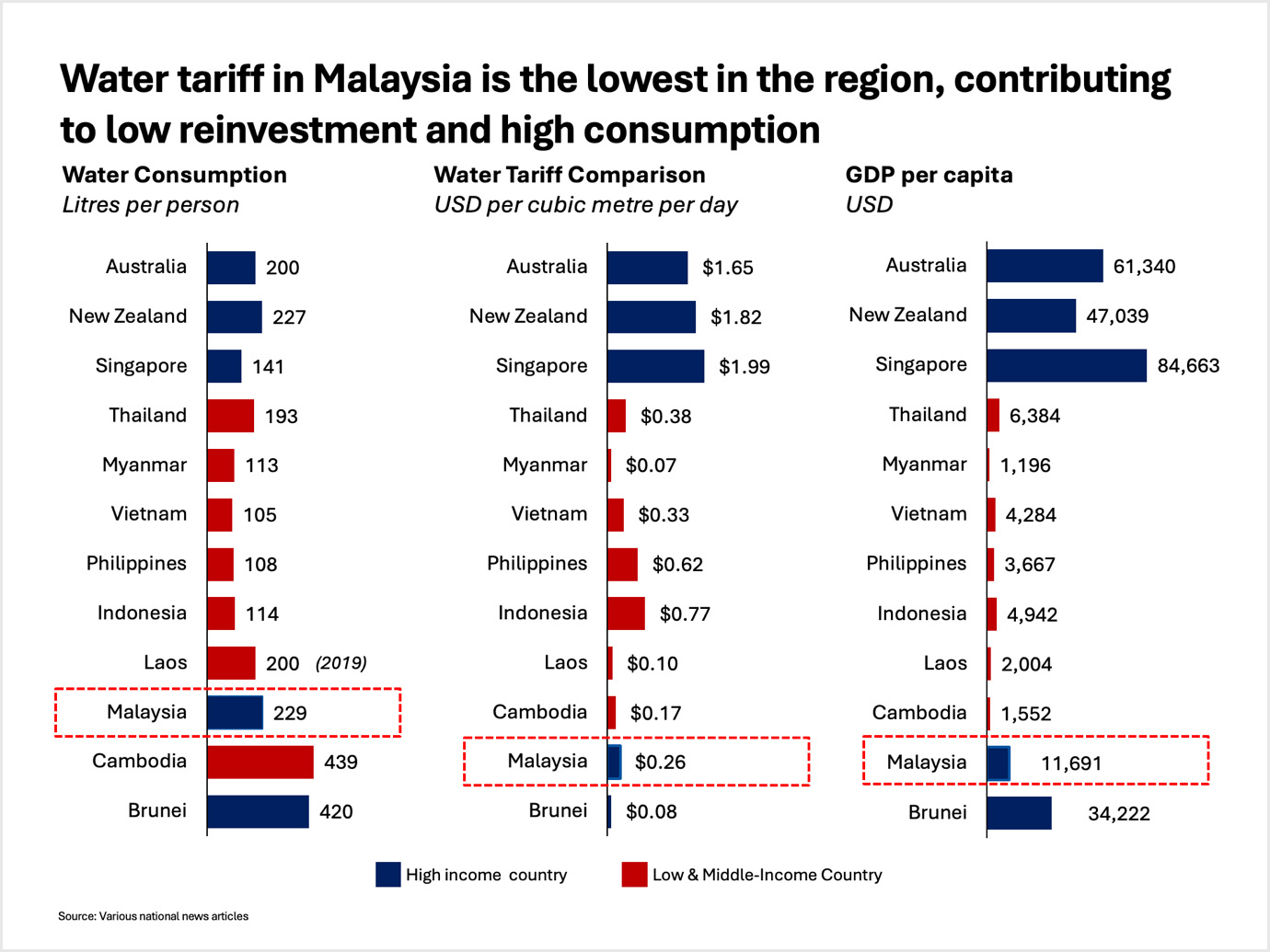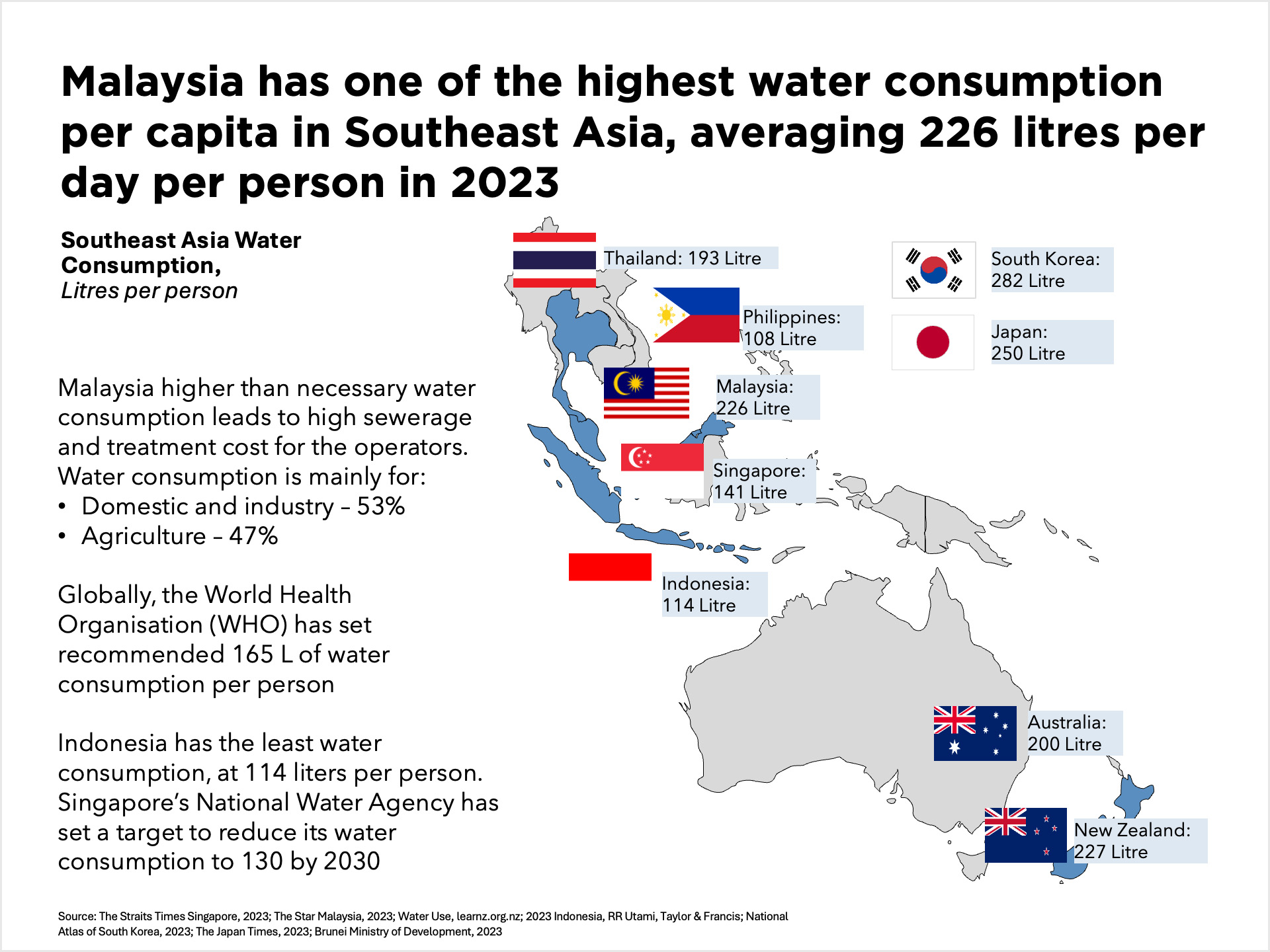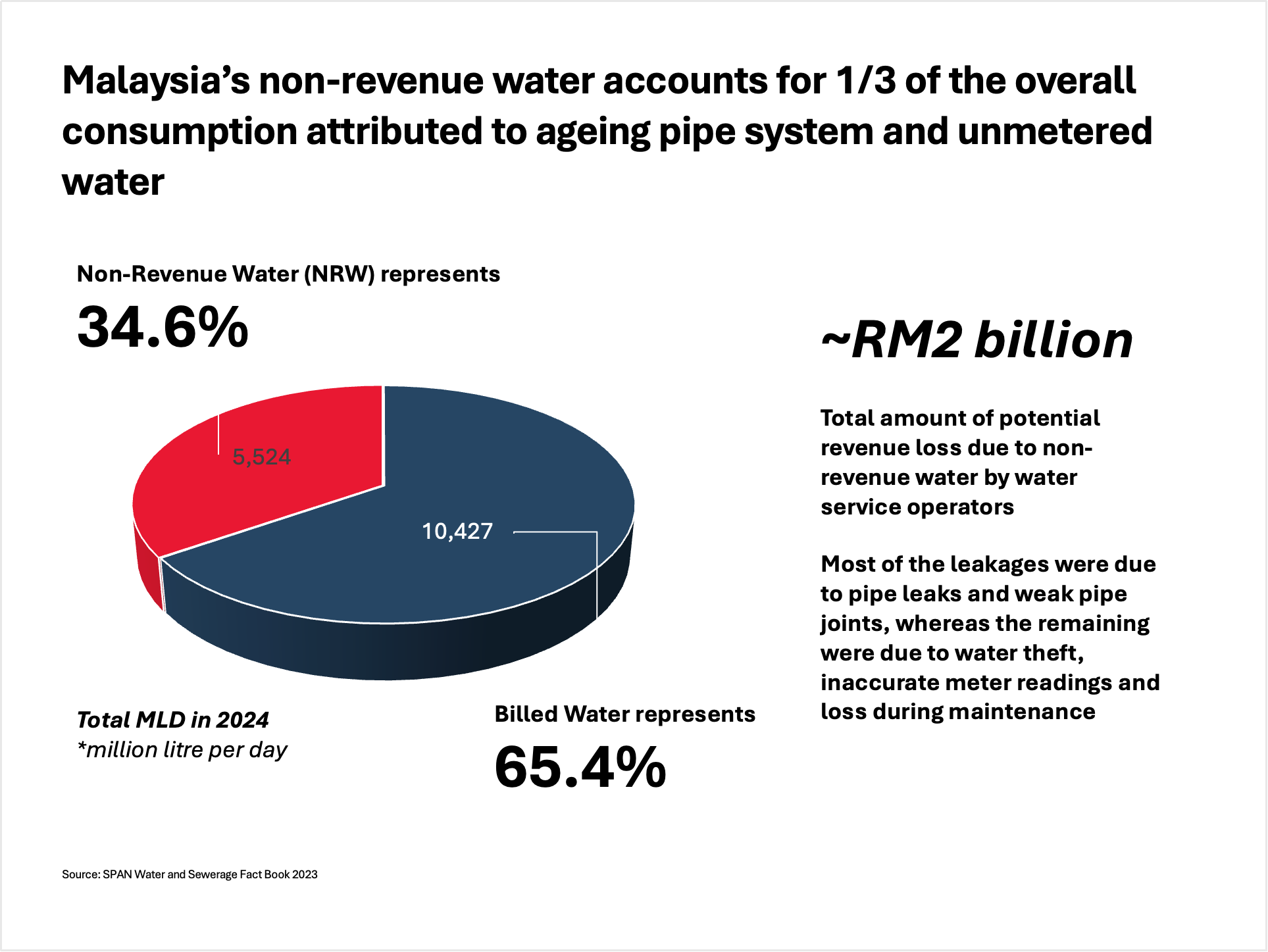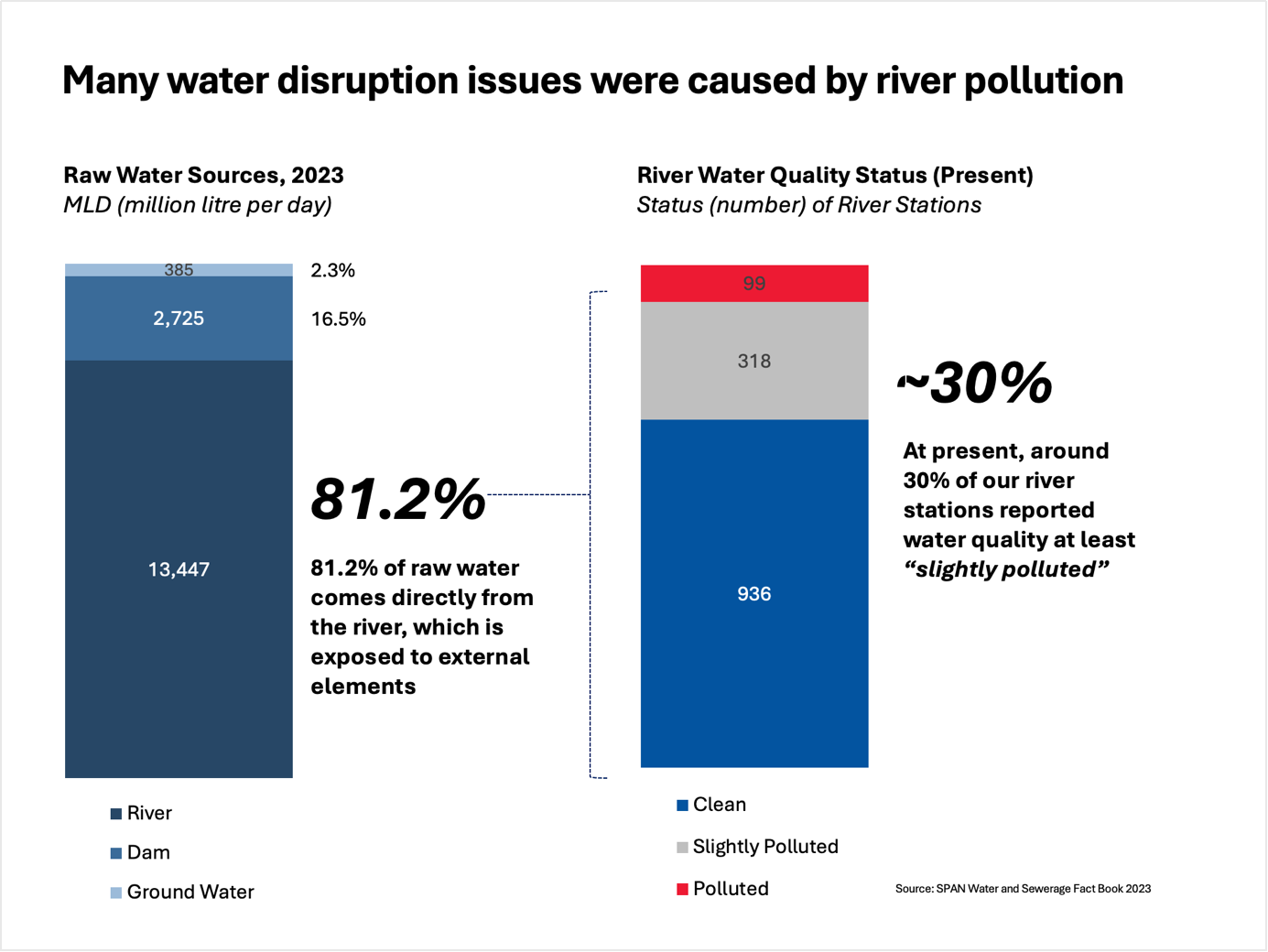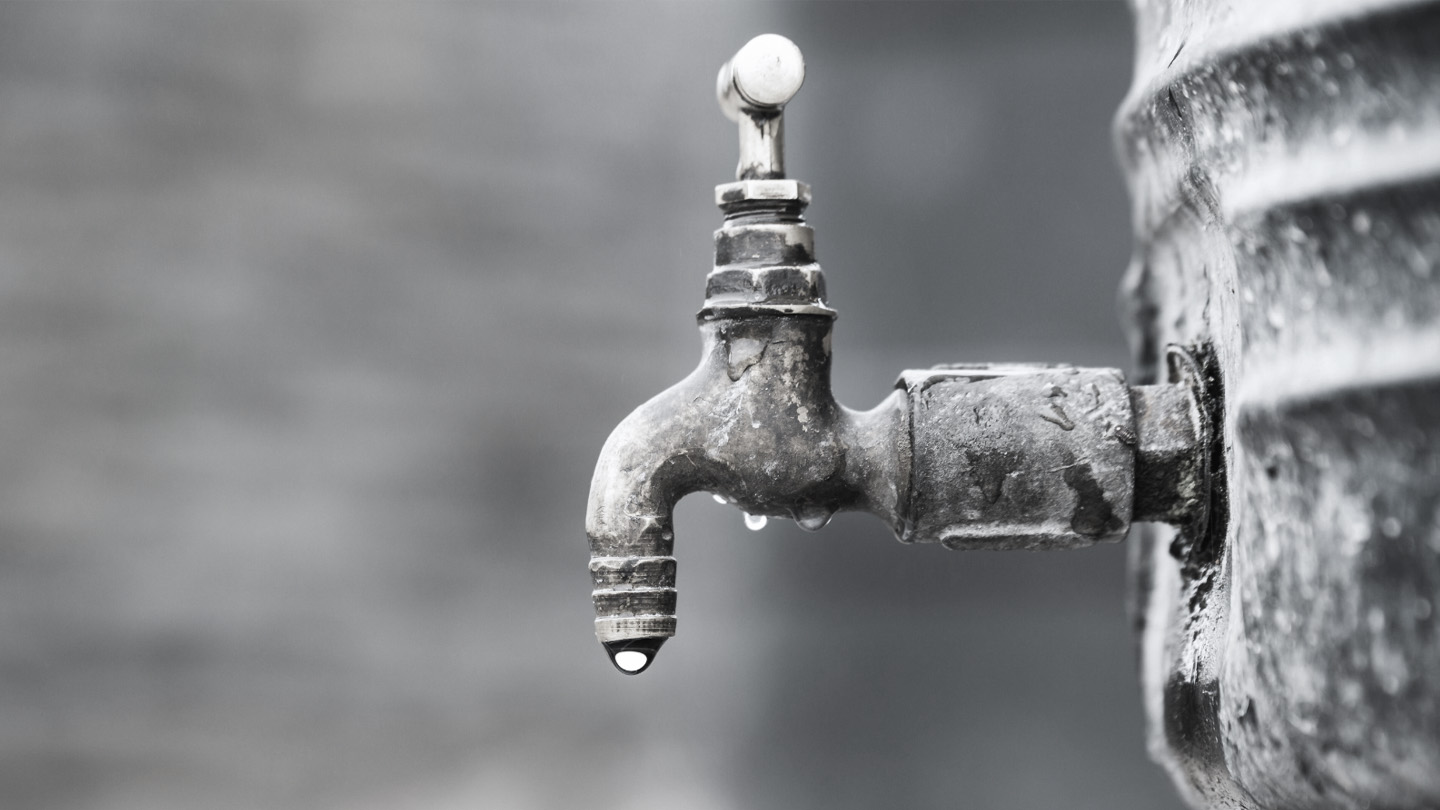
Lead Author: Shahrizan Syawal bin Mohd Adam Das (Senior Vice President)
Co-Author: Cheska Tatiana Ridzuan (Associate Vice President)
INCREASING DEMAND FOR WATER
Malaysia is emerging as Southeast Asia’s Data Center Powerhouse amid the surge in global demand for AI, cloud computing, data storage and related technologies. Global tech giants such as NVIDIA, Microsoft, Amazon, and Google see Malaysia has an attractive destination due to our robust connectivity, affordable electricity & water and favourable investment policies. Singapore’s moratorium on data centres 2019 and 2022, has also prompted the migration to Malaysia, with Kulai and Cyberjaya being amongst the top beneficiaries due to land availability and competitive land prices.
However, the pace of progress on data centres has compounded some of the fundamental issues that Malaysia continues to grapple with. One which is key for the overall operations of data centres is Water. This year alone, there has been numerous water cuts reported in the Selangor and Johor, although the frequency of water disruption has dropped in most states in the last 5 years. This raises the question on whether future increase in water requirements can be met.
LOW WATER TARIFF
For decades, the Malaysian government has heavily subsidized water, ensuring comprehensive access and affordability to its people. SPAN’s recent announcement on the water tariff increment by an average of 22 sen per cubic meter for peninsula and Labuan is timely, but still insufficient to cover the operational expenses of water supply services. According to actual 2022 data by SPAN, the average tariff which needs to be charged for cost recovery is RM1.751 per m3. At $0.26, Malaysia’s water tariff is the lowest in ASEAN. Countries like Thailand, Indonesia and Philippines, with lower GDP per capita have higher tariffs at $0.38, $0.77, and $0.62 respectively. Correspondingly, they also have lower water consumption per capita.
HIGH WATER CONSUMPTION
The high subsidy that Malaysians enjoy on water have unintentional consequence on their habits and routines when it comes to water consumption. As a nation, Malaysia has one of the highest water consumption per capita in Southeast Asia, averaging 226 litres per day per person of water in 2023, far exceeding the recommended usage of 165L water consumption per capita set by the World Health Organisation (WHO), and 180L limit set in the 11th and 12th Malaysian Plan. Malaysia’s water consumption exceeds that of our neighbours like Singapore, Indonesia, and Philippines, who consumed 141L, 114L, and 108 respectively. As a highly subsidized commodity, there is no incentive to encourage conservation and waste avoidance among users. This coupled with the lack of ability to recoup operational expenses adds a heavy burden on the water operators to maintain a sustainable operation for the long term.
HIGH NON-REVENUE WATER (NRW)
Compounding the matter is Malaysia’s high non-revenue water (NRW), accounting for 34.6% or 5,524 million litre per day of the overall water consumption. In ringgit value, this amounts to approximately RM2 billion in potential revenue loss by water service operators. Leakages from the non-revenue water are due to pipe joints, water theft, and inaccurate water readings as well as loss during maintenance.
PREVALENCE OF RIVER POLLUTION
81.2% of Malaysia’s raw water sources originate from the river, while the remaining comes from dams and ground water. This also means that our water source is exposed to external elements such as rain and water pollution, where the latter has been one of the main causes of many water disruptions. Based on data from SPAN, 30% of our river stations reported water quality at at least “slightly polluted” level. In fact, many of the water cuts that affect domestic residents are due to water pollution from industrial discharges, illegal dumping and agriculture runoffs. The Government’s move to amend the Environmental Quality Act 1974 (Act 127) by increasing the maximum fine from RM100,000 to RM10 million for offences involving water pollution, oil waste pollution, and waste disposal is a step in the right direction to deter further occurrences of river polluting activities. However, it needs to be followed-up with strong enforcement on the ground.
INTERTWINED JURISDICTION
Historically, Malaysia’s water industry has intertwined jurisdictions between the federal government and state authorities, which has led to misalignment in policies and management & operations of water assets. Although, the ownership of water assets such as piping system and water treatment plants, was transferred to the National Water Services Commission (SPAN) in 2005, and with it the ability to set and control water tariff, it is up to the state authorities and operators to enforce these tariffs within their territories. Only until recently, Pahang has not raised its water tariff for domestic users for the past 40 years. Prior to the 2024 revision, Pahang’s domestic individual tariff was RM0.37 per m3. Now, it has revised to RM0.78 per m3 (for first 20 m3). In contrast, Johor’s water tariff is RM1.05 per m3 (for first 20 m3). The table below shows the various water tariff by each state:
| State | Rate for first 20 m3 (RM/m3) |
| Johor | RM1.05 |
| Selangor/KL/Putrajaya | RM0.65 |
| Labuan | RM0.92 |
| Negeri Sembilan | RM0.72 |
| Melaka | RM0.87 |
| Terengganu | RM0.58 |
| Perak | RM0.75 |
| Perlis | RM0.72 |
| Kelantan | RM0.68 |
| Pulau Pinang | RM0.62 |
| Kedah | RM0.75 |
| Pahang | RM0.78 |
Source: SPAN’s 2024 Water Tariff
Additionally, water sources that come from the river, dam and underground, fall within the jurisdiction of the state. For example, the Badan Kawalselia Air (BKSA) is the state’s water regulatory unit on state water resources, whereas the Jabatan Pengairan dan Saliran (JPS) – Department of Irrigation and Drainage – provides technical functions of water resources management and development at the state level. On the other hand, Indah Water Konsortium (IWK) is the national sewerage company at the federal level that develops and maintains our sewerage system.
Given the intertwined jurisdiction on water sources, asset management, operations, and regulation, coordination and alignment in actions between the various parties is critical to ensure smooth and successful implementation of policies and projects.
RECOMMENDATION
The Water Sector Transformation 2040 (WST 2040) which has the objective of making the water sector an economic growth driver outlined 87 strategies, 106 Immediately Implementable Projects (IIPs), 601 targets, and 601 KPIs, to be implemented across 12MP, 13MP, 14MP and 15MP. Here, we wish to highlight and emphasize 5 recommendations which we believe will have impactful outcomes to address Malaysia’s water woes:
- Implement cost-recovery tariffs especially for industry, agriculture and urban areas where water consumption is the highest – punitive water rates should be applied for heavy water users who consume more than the daily average, subsidy for minimum usage (below 20m3) can be continued.
- Upgrade existing water treatment plants and build new facilities to increase water reserve margins in states with low to zero reserve margins such as Selangor, Kelantan, Kedah, and Perlis.
- Educate the public on the importance of water conservation through campaigns, school programs, and community outreach at targeted locations such as PPRs, mosques, schools and universities, etc.
- Introduce Interstate Raw Water Transfer to allow States with abundance and excess water (Pahang, Perak, Johor) to sell surplus water to States with insufficient water (Selangor, Pahang, Melaka) – a standardized pricing framework should be established to help State Governments set raw water prices.
- Construct a water grid to connect various district’s water supply reticulation systems for improved inter-connectivity which would allow the channelling of water from other districts to the district facing a water disruption. This will improve the resilience of the water supply system.
